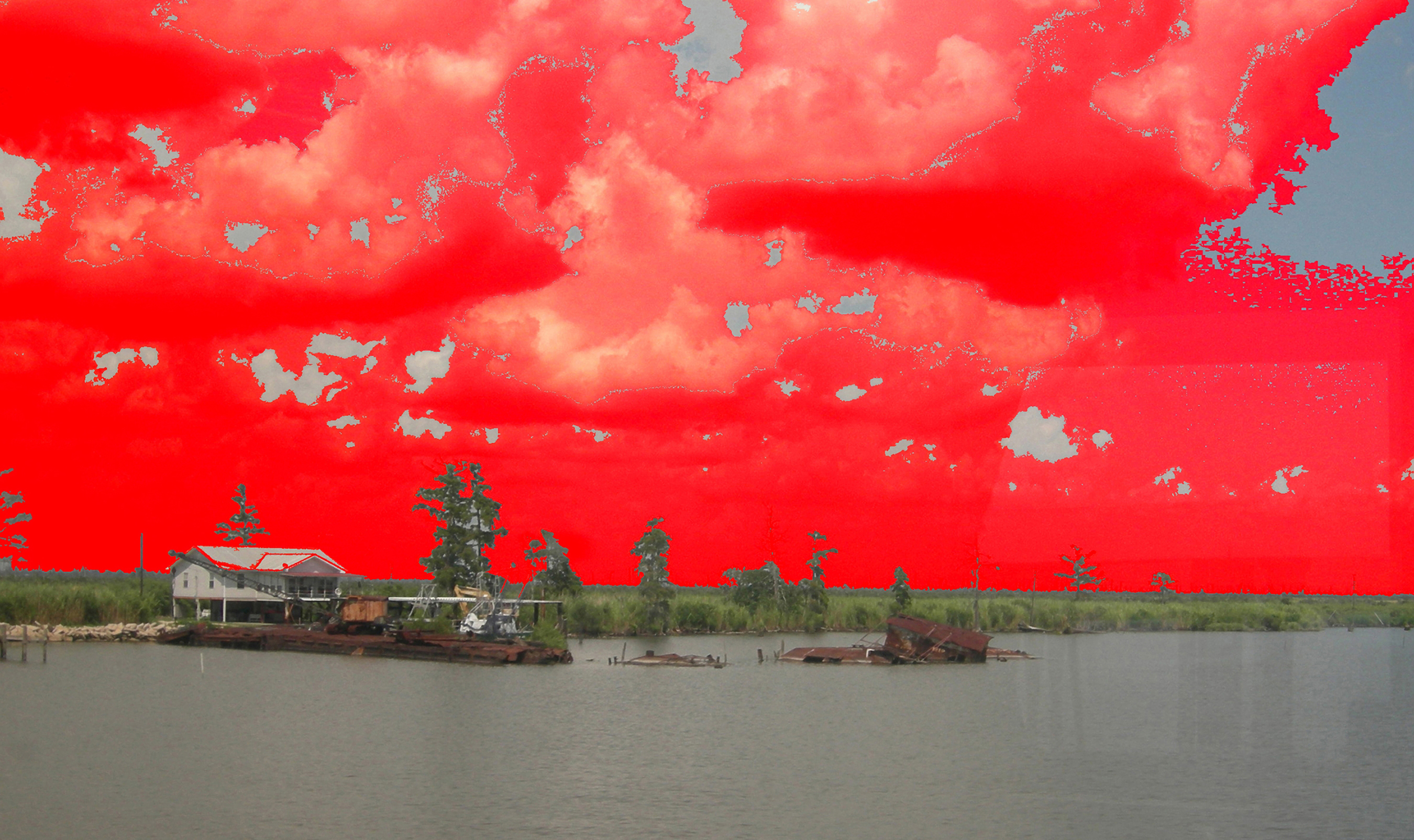The crimson skies in this artwork ominously forecast an approaching storm. Rahmani took the original photograph during the 2008 hurricane season. Traveling by train from Maine to the Gulf of Mexico, she had an opportunity to observe and reflect on America’s changing landscape. In New Orleans, Rahmani continued on by car as a hurricane roared about her. Later, she created this digital composition to capture the sense of danger she experienced and her concern for our future. As we continue altering our atmospheric chemistry with ever-increasing concentrations of greenhouse gases, we also change temperature and precipitation patterns, increasing the frequency and intensity of extreme weather events.

Aviva Rahmani, Warming Skies Over the Louisiana Bayous Seen From a Train Window (2008-2009) Digitally manipulated photograph. Dimensions: variable. Courtesy of the artist.
Artist’s Statement
The basis of my ecological art work is grounded in a restoration approach I have developed, “Trigger point theory as aesthetic activism,” to effect environmental triage. Trigger Point theory means applying traditional aesthetic tools with science for the analysis of small, carefully chosen areas of degraded coastal landscape to leverage large landscape healing. I call that “good housekeeping” for the earth, in which everyone can participate.
My particular interest now is in how emerging global factors may be disrupting fish ecology, an early indicator of environmental degradation and climate change. Many people are unaware that fish are being affected by all the same factors causing catastrophic drought, storms, temperature extremes and flooding worldwide.
I work closely with a team of scientists and others, using online technology whenever possible to limit our impact on the environment, to monitor and understand fish populations and their complex ecological relationships under stress in the Mississippi Water Basin, especially around Memphis, Tennessee. Memphis is important as a midpoint between factory farms upstream and dead zones downstream in the Gulf of Mexico. This research is integral to my art practice, which includes seeking ways to visualize and communicate the way this seemingly local problem illustrates problems that are really global in scale.
Artist’s websites:
www.avivarahmani.com
www.pushingrocks.blogspot.com

